Last updated on March 20th, 2025 at 12:42 pm
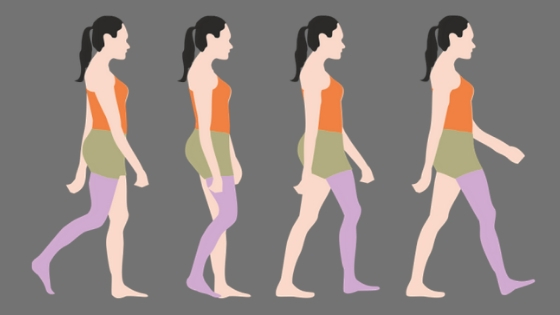
We humans ambulate from one point to another in a bipedal walk pattern. This walk pattern is scientifically called the gait cycle. But what is the definition of the gait and gait cycle, what are its different phases, and how can we analyze them? In this article, we will try to find answers to all these questions. We will also cover the different abnormal gait patterns.
In one of our articles, we discussed the anatomy of the gait cycle in detail. here we will stick to its analysis. But, let us first start with the gait definition.
Gait definition
Gait is synonymous of human ambulation. Walking can be defined as “a method of locomotion involving the use of the two legs, alternately, to provide both support and propulsion” 1.
Walking is a common activity of daily living and at the same time a very complex one. It involves all levels of the nervous system and many parts of the musculoskeletal apparatus as well as the cardiorespiratory system1.
One leg is raised and directed forward by flexing the hips and knee to start walking. Activation of the supporting contralateral leg and trunk muscles moves the body’s centre of gravity over the weight-bearing leg and forward. The heel of the swinging leg is then placed on the ground1.
A gait cycle commences when the heel of the reference leg contacts the supporting surface and ends when the heel of the same leg contacts the ground again. Observe the animation of this young girl walking and try to analyze the green and pink shades on her legs.
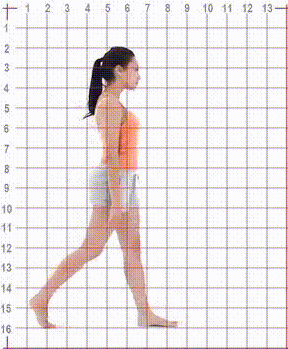
In the animation, let us consider the right leg our reference leg. When the right leg is in the air, it is green, but when it is in contact with the ground, it is pink.
The gait cycle starts when the heel of the right leg strikes the ground and ends when the same leg’s heel once again strikes the ground, making a complete single cycle.
With the commencement of the gait cycle, a red-green button starts blinking. The Gait cycle is subdivided into phases, and it is analyzed to analyze ambulation/gait.
Different phases of gait cycle
Let us start this topic with this illustration. Before you read further, observe that the reference leg is in a deeper shade and try to note its progression.
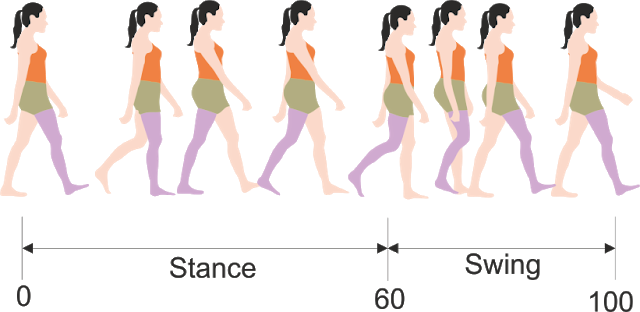
The gait cycle commences when the heel of the reference leg comes in contact with the supporting surface. Taking the right leg as the reference leg (see image above), the walk cycle will commence when the heel of the right leg comes in contact with the ground.
So, how does the gait cycle end? It ends when the heel of the same leg (the right leg in our case) once again comes in contact with the ground. Each walk cycle passes through two phases, both of which have components.
We will talk about components of the walk cycle, but before proceeding let us see what the two phases of the walk cycle. They are:
- Stance phase.
- Swing phase.
Stance phase
Once again, go back to our animation. In our animation, the woman is walking, and when the cycle begins, her right leg is shaded with red colour.
Observe that while the leg is shaded red, it is in contact with the ground. This is the stance phase, which is defined as the interval in which the foot of the reference leg is in contact with the ground. It makes up 60 % of the cycle.
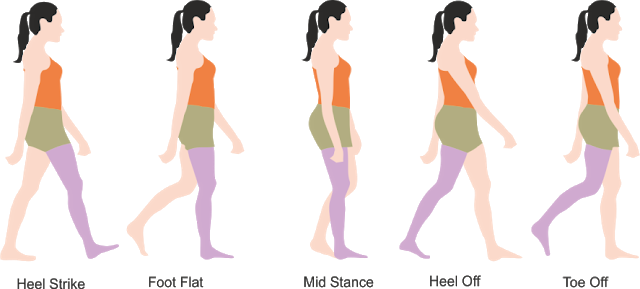
We can further study the stance phase under five sub-phases.
- Heel strike/ Initial contact: The heel strike or initial contact of the walk cycle is the beginning of the stance phase when the heel comes in contact with the ground. In this phase, the hip is flexed, the knee is extended, and the ankle is dorsiflexed to neutral.
- Foot flat/ Loading response: It occurs immediately after the heel strike when the sole of the foot contacts the ground. In this phase, the body weight is transferred onto the forward limb. Using the heel as a rocker, the knee is flexed for shock absorption. Ankle plantarflexion limits the heel rocker by forefoot contact with the floor. This is the initial double stance period. The phase begins with initial floor contact and continues until the other foot is lifted for swing1.
- Midstance: The point at which the body passes directly over the reference extremity. This is the first half of the single-limb support interval. It begins as the other foot is lifted and continues until body weight is aligned over the forefoot1.
- Heel off: It is the interval during which the heel of the leg leaves the ground.
- Toe off/ Terminal stance: Both heel off and toe-off together is known as terminal stance. In this phase, the heel rises and the limb advances over the forefoot rocker. The knee increases its extension and then just begins to f1ex slightly. The increased hip extension puts the limb in a more trailing position. The other limb is in terminal swing. This phase completes single limb support. It begins with heel rise and continues until the other foot strikes the ground. Throughout this phase body weight moves ahead of the forefoot1.
Swing phase
Again referring to our animation, when her right leg leaves the ground and swings in the air, the leg is surrounded by the green color. This is the swing phase.
It can be defined as the interval when the foot is not in contact with the ground and swings above. Swing phase makes the rest 40 % of the gait cycle. Between this two-phase, there is two double support phase. Of the total walk cycle, the double support phase makes 20 % of it.
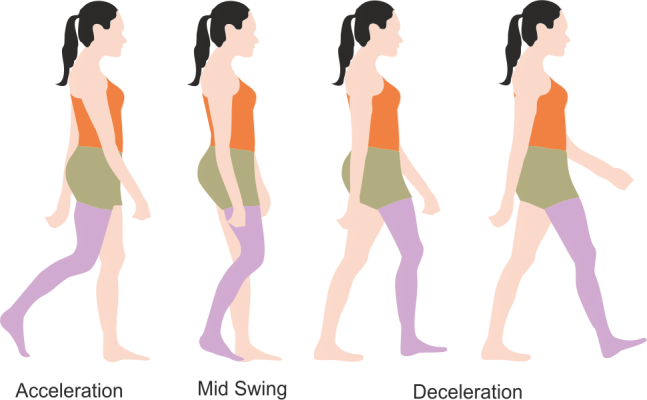
The sub-phases of swing phase are:
- Acceleration/ Initial-swing: Just after the toe-off, the reference leg is above the ground and starts swinging forward. The foot is lifted and limb advanced by hip flexion and increased knee flexion. The ankle only partially dorsiflexes. The other limb is in early midstance.
- Midswing: It is the portion of the swing phase when the reference leg passes directly below the body. Advancement of the limb anterior to the bodyweight line is gained by further hip flexion. The knee is allowed to extend in response to gravity while the ankle continues dorsiflexing to neutral.
- Deceleration: Limb advancement is completed by knee flexion. The hip maintains its earlier flexion. And the ankle remains dorsiflexed to neutral. The other limb (clear) is in terminal stance. This final phase of swing begins with a vertical tibia and ends when the foot strikes the floor. Limb advancement is completed as the leg (shank) moves ahead of the thigh.
Also Read: New 3D Tech prosthetic liners help more amputees walk again
Basic terminology describing the gait cycle
Important measures of gait include:
- walking speed,
- Cadence: The cadence is the number of steps taken in a given time, there are two steps in a single gait cycle, and the cadence is a measure of half-cycles. The cycle time, also known as the „stride time‟, in seconds: cycle time (s) = 120/cadence (steps/min) (1).
- Walking base width (measured from midpoint to midpoint of both heels),
- Step length (measured from the point of foot contact to the point of contralateral foot contact) and
- Stride length (linear distance covered by one gait cycle).
- Walking speed is the distance covered in a given time. The instantaneous speed varies from one instant to another during the walking cycle, but the average speed is the product of the cadence and the stride length.
- The cadence, in steps per minute, corresponds to half-strides per 60 seconds or full strides per 120 seconds. The speed can be calculated using the formula: speed (m/s) = stride length (m) × cadence steps/min)/120. If cycle time is used in place of cadence, the calculation becomes much more straightforward: speed (m/s) = stride length (m)/cycle time (s)1.
The preferred walking speed in healthy adults up to the age of 59 years is approximately 1.4 m/s. Average stride lengths in healthy adults range between 150 and 170 cm. The average cadence in young adults was reported to range between 115 and 120 steps/min1.
Ageing is associated with a decline in gait speed and step length whereas cadence remains relatively stable. Elderly subjects prefer a 40 % wider step width than young persons (average step width in elderly women approximately 8 cm and in elderly men 10 cm)1.
Importance of gait definition and analysis
Any deviation from the normal cycle gives hints of an underlying injury or structural deformity. Analyzing the gait cycle helps us to locate or pinpoint the injury or structural deformity.
If a person is limping or his walking is not normal, it is due to a structural deformity or pain. Understanding the normal gait cycle helps us to better detect any abnormal gait pattern which in turn helps us to diagnose the underlying structural deformity.
This is why understanding the concept of the gait cycle is so important. Many of the chronic pain conditions can be managed by correcting the wrong/ abnormal gait pattern.
Few causes for gait cycle deviation
- The weakness of the muscle.
- Paraparesis/paralysis of a certain group of muscle.
- Tightness/contracture of muscle, tendon or ligaments.
- Bony deformity like non-union / mal-union of fracture.
- Limb length deformity.
- Chronic pain.
- Etc…
Due to any above reason the person limps. His normal gait cycle is disturbed. Here are a few examples of gait cycle deviation. Although the list is long, let me name a few.
- Antalgic gait.
- Waddling gait.
- Trendelenburg’s gait.
- Hand to knee gait.
- Etc…
Not all patient will present their problem as an abnormal gait pattern. A paralysis case such as hemiplegics, quadriplegics or others will complain of difficulty walking. They will describe their problems as being unable to lift the foot or leg.
But, not every patient will come to us with such complaints. Let me explain it with a case which I treated just a few months back. A few months back I had a male patient of 56 came to me with the chief complaint of right knee pain. I observed that his gait pattern is not normal.
Upon examination, it was found that he is having limb length discrepancy. His left leg being short of 1 inch short of the right leg. In addition to treating his knee pain, I also advised shoe modification for limb length discrepancy. He showed excellent improvement.
Final word
With the injury or due to the disease process, there could be a
Keep Reading: Gait cycle muscles activity, it’s anatomy explained
The author is a physiotherapist who has been practising for the last 17 years. He holds a Bachelor's in Physiotherapy (BPT) from SVNIRTAR (Swami Vivekananda National Institute of Rehabilitation and Research), one of the prestigious physiotherapy schools in India.
Whatever he learns dealing with his patient, he shares it with the world through blogs and e-books. He also owns a YouTube channel, "Sunit Physiotherapist" with over 8 lakh active subscribers. Here, he shares everything he gets to learn serving the patient.
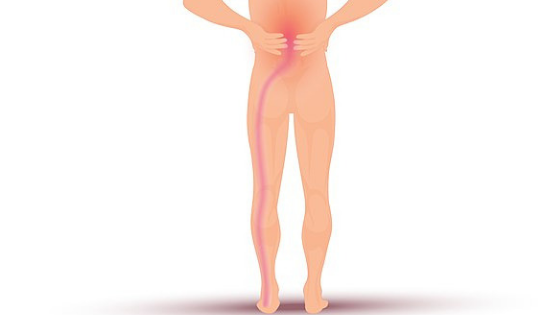
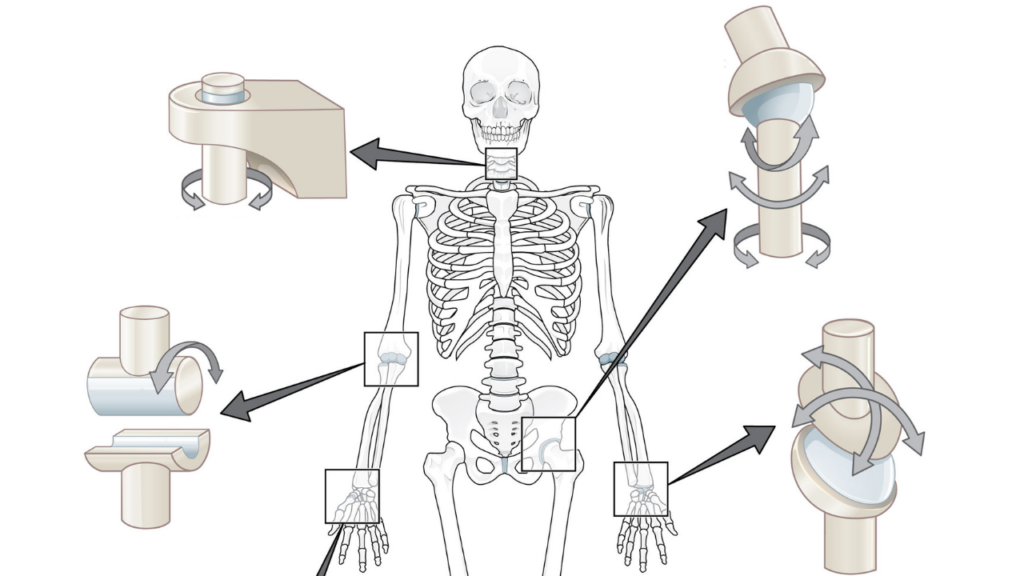
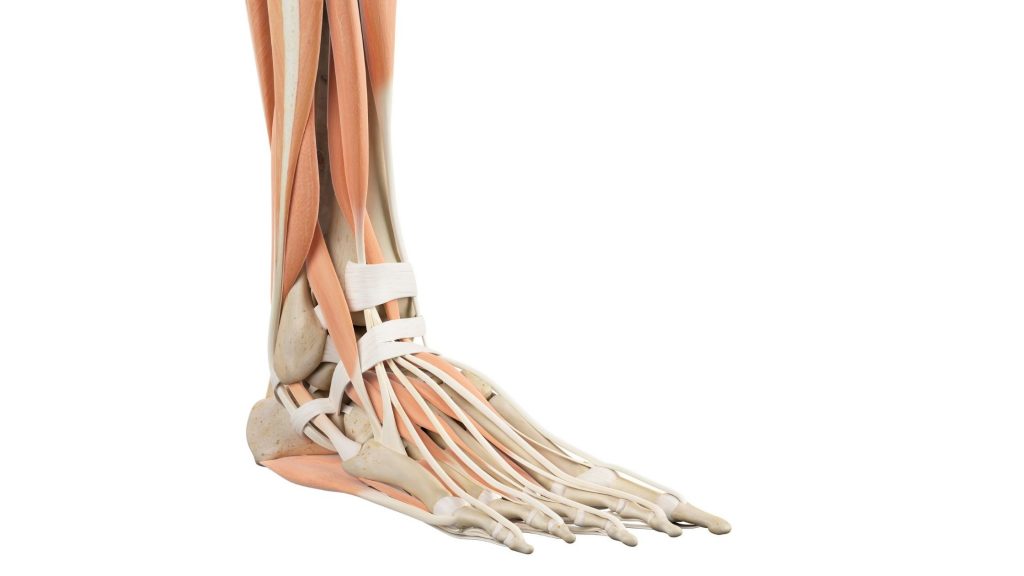
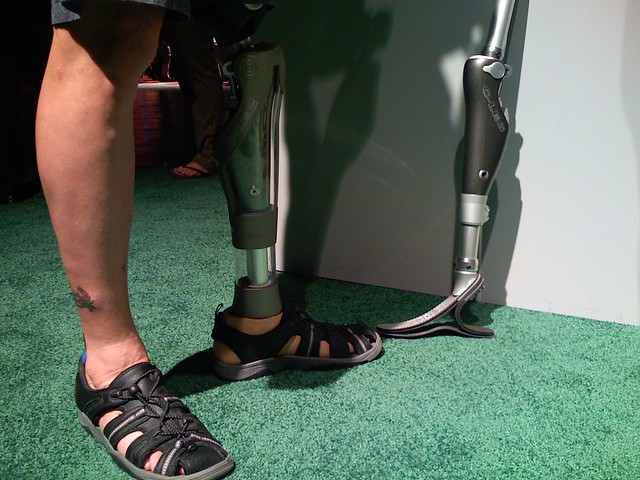
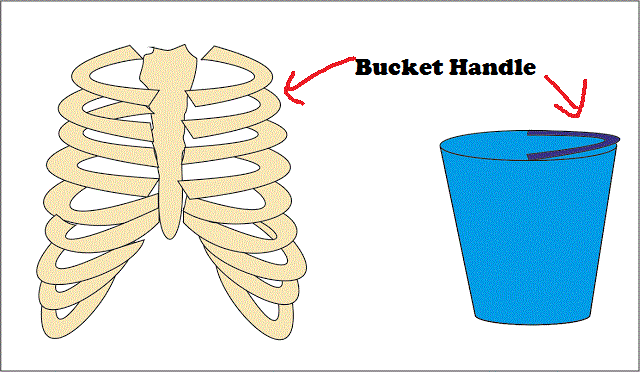
Pingback: Circumduction gait: Causes, muscle weakness, treatment - Physiosunit
Pingback: Circumduction gait: Causes, muscle weakness, treatment : Physiosunit